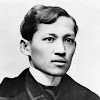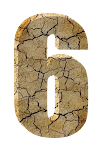Facts About Republic Day: Learn about the celebration and significance of Republic Day in India with 50 fascinating facts. On this day, the country honors the adoption of the Constitution of India, which came into effect on January 26, 1950. From the grand parade in New Delhi to cultural programs and sporting events across the country, this holiday is a time for the people of India to come together and celebrate the achievements of the nation. In this article, we've compiled 50 interesting facts about Republic Day in India, covering its history, celebration, and significance.
- Republic Day is a national holiday in India, celebrated on January 26th.
- It marks the day when the Constitution of India came into effect, replacing the Government of India Act 1935 as the governing document of India.
- The Constitution of India was adopted by the Constituent Assembly on November 26, 1949 and came into effect on January 26, 1950.
- Republic Day is celebrated with parades and ceremonies in cities and towns across India, with the largest and most elaborate celebration taking place in the capital city of New Delhi.
- The main event of the day is a grand parade that takes place in New Delhi and is attended by the President of India, who is also the Chief Guest of the parade.
- The parade showcases India's cultural and religious diversity, as well as its military might. It includes floats representing different states of India and cultural groups, as well as a display of military equipment and a parade by the armed forces.
- Republic Day is also marked by flag-hoisting ceremonies, patriotic songs, and cultural programs.
- The celebrations culminate in the evening with a display of fireworks.
- The Republic Day parade in New Delhi starts from Rashtrapati Bhavan (the President's residence) and proceeds down Rajpath, passing by iconic landmarks such as India Gate and the Parliament building.
- The parade culminates at the Red Fort, where the Prime Minister of India delivers the "Address to the Nation" on the eve of Republic Day.
- The President of India also presents awards such as the Padma Awards and the gallantry awards during the Republic Day celebrations.
- In the states, the Chief Minister and other dignitaries hoist the national flag and lead the celebration.
- The national flag of India is hoisted on government buildings and schools on Republic Day.
- In the lead-up to Republic Day, schools and other organizations hold cultural programs and competitions such as patriotic song singing, quiz contests, and essay writing to encourage a sense of national pride and unity among the citizens.
- Republic Day is also marked by the distribution of sweets and the flying of kites, which is a popular tradition in many parts of India.
- The Republic Day parade in New Delhi features a display of India's cultural and ethnic diversity, with floats representing different states and cultural groups. Each state has a tableau that showcases its cultural and artistic heritage, as well as its achievements and progress.
- The parade also includes a display of traditional dance and music, as well as a march-past by school children.
- The Republic Day parade in New Delhi also includes a display of military equipment and a parade by the armed forces. The parade showcases India's military might and honours the sacrifices of its soldiers.
- The armed forces also participate in the parade in full ceremonial dress, with bands playing military music.
- The Republic Day celebrations also include a display of colourful floats and tableaux, as well as cultural programs and sporting events.
- In addition to the main celebration in New Delhi, Republic Day is also celebrated in all states and union territories of India with parades and other cultural programs.
- Republic Day is a time for people across India to come together and celebrate their national identity and unity. It is a day of pride for all Indians.
- Before the Constitution of India came into effect, India was ruled by the British and was known as the British Indian Empire.
- The Constitution of India was the result of a long and drawn-out process of constitutional negotiations and debates. It took almost three years for the Constituent Assembly to draft the Constitution.
- The Constitution of India is the longest written constitution of any sovereign country in the world, with a total of 448 articles and 12 schedules.
- The Constitution of India is based on the principles of democracy, equality, and justice, and it guarantees the fundamental rights of all citizens of India.
- The Constitution of India also establishes the structure and powers of the government, as well as the duties and responsibilities of its citizens.
- The Constitution of India was adopted by the Constituent Assembly on November 26, 1949, but it came into effect on January 26, 1950. The date was chosen to mark the end of the non-violent resistance movement led by Mahatma Gandhi and the Indian National Congress against British rule.
- The Constitution of India was adopted with a Preamble, which sets out the guiding principles of the Constitution and the ideals that it seeks to achieve. The Preamble to the Constitution of India reads: "We, the people of India, having solemnly resolved to constitute India into a sovereign, socialist, secular, democratic republic and to secure to all its citizens: justice, social, economic and political; liberty of thought, expression, belief, faith and worship; equality of status and of opportunity; and to promote among them all fraternity assuring the dignity of the individual and the unity and integrity of the Nation."
- The main ceremony on Republic Day is held in New Delhi, where the President of India is the Chief Guest of honor.
- The President of India arrives at the Rashtrapati Bhavan (the President's residence) in a grand procession, accompanied by a full military escort.
- From the Rashtrapati Bhavan, the President proceeds to the main venue of the celebrations, the Rajpath, where the main parade takes place.
- The parade is attended by the Prime Minister of India, other dignitaries, and a large gathering of people.
- The parade is led by a group of riders on horseback, followed by a variety of floats representing different states and cultural groups.
- The parade also includes a display of traditional dance and music, as well as a march-past by school children.
- The parade culminates at the Red Fort, where the Prime Minister of India delivers the "Address to the Nation" on the eve of Republic Day.
- The celebrations conclude in the evening with a grand display of fireworks.
- In addition to the main celebration in New Delhi, Republic Day is also celebrated in all states and union territories of India with parades and other cultural programs.
- The state-level celebrations are typically led by the Chief Minister of the state and other dignitaries, and feature a variety of cultural programs and sporting events.
- In many states, the celebrations also include the distribution of sweets and the flying of kites, which is a popular tradition in many parts of India.
- Republic Day is a time for people across India to come together and celebrate their national identity and unity. It is a day of pride for all Indians.
- The national flag of India is hoisted on government buildings and schools on Republic Day, and the national anthem is played.
- Schools and other organizations hold cultural programs and competitions such as patriotic song singing, quiz contests, and essay writing to encourage a sense of national pride and unity among the citizens.
- The President of India also presents awards such as the Padma Awards and the gallantry awards during the Republic Day celebrations. These awards are given to individuals who have made exceptional contributions to their fields or to the nation.
- Republic Day is a public holiday in India, and schools, offices, and other organizations are closed on this day.
- Many people participate in the celebrations by attending the parades and other cultural programs, or by watching them on television.
- The Republic Day parade in New Delhi is televised live and is watched by millions of people across the country.
- The parade showcases India's cultural and ethnic diversity, as well as its military might. It includes floats representing different states and cultural groups, as well as a display of military equipment and a parade by the armed forces.
- The parade also features a display of traditional dance and music, as well as a march-past by school children.
- The main event of the day is the grand parade that takes place in New Delhi and is attended by the President of India, who is also the Chief Guest of the parade.
- The celebrations culminate in the evening with a display of fireworks.
- In addition to the main celebration in New Delhi, Republic Day is also celebrated in all states and union territories of India with parades and other cultural programs.
Whether you're an India enthusiast or just want to learn more about this fascinating holiday, these 50 facts about Republic Day in India are a great place to start. From the adoption of the Constitution of India to the grand parade in New Delhi, this article covers the history, celebration, and significance of this important national holiday. So if you want to get a deeper understanding of India's rich history and culture, or just want to learn more about this holiday, be sure to check out these 50 amazing facts about Republic Day in India.














0 Comments